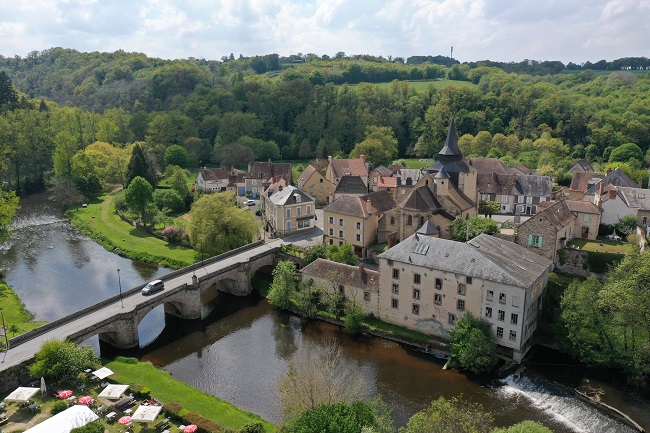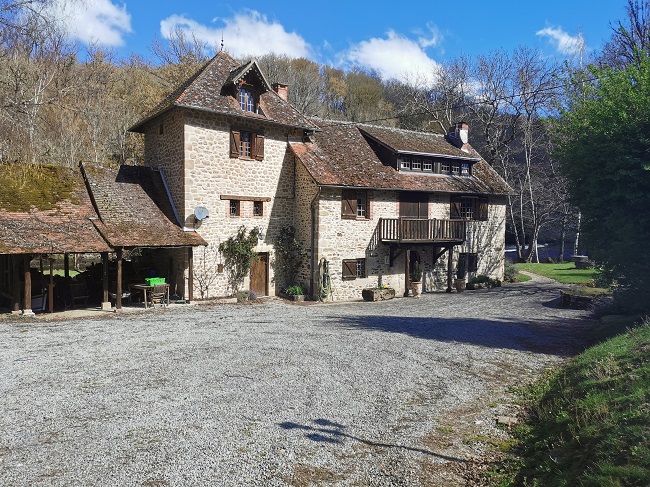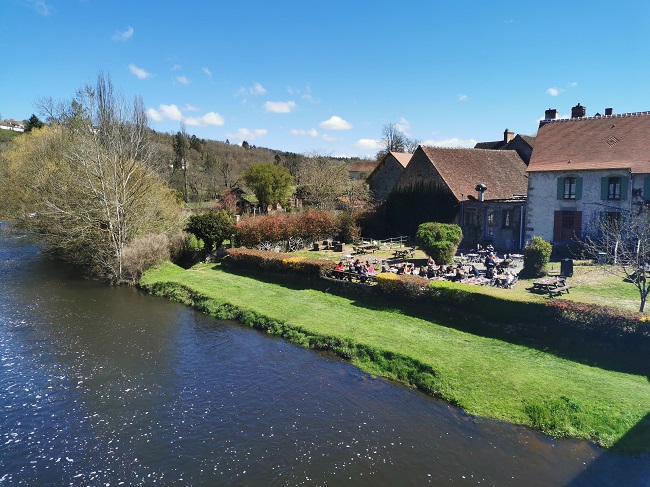Beautiful Villages of the Creuse

Mostly known as the second least populated département of France, the Creuse is a delightfully tranquil area dotted with hidden gems to visit. Take a stroll in some of the prettiest villages of the Creuse where the secrets of past lives and nature come together.
The Creuse, in central France, is known for its quality of light and has long attracted artists such as Monet, the master of Impressionism. Nowadays, the area is a retreat for artists following in their footsteps and there are many independent galleries in villages made famous by their visits, where you can view and purchase a beautiful study of the area to hang on your wall. Interspersed among the tourist attractions of the Creuse are lesser-known villages, each with its own charm and rich in heritage.
Saint Sulpice le Dunois
The village of Saint Sulpice le Dunois with its 10th-century church is unlikely to be on anyone’s ‘must visit’ list and is usually mentioned in the context of ‘on-the-way-to’ somewhere else, but its auberge (inn) which seems to snuggle into the walls of the church is worth a visit. It is reputed that wolves would come to drink at the Fontaine Saint-Sulpice and the smaller Fontaine Saint-Mandé is believed to protect animals. A statue of a white wolf on a fountain just within the gates of the Auberge de la Fontaine aux Loups pays homage to this tale. The inn was once a beautiful 17th century mansion belonging to a French General. It became an inn in 2002 and the wolves are replaced by other visitors who come to drink, not at the fountain but in the beautifully restored barn with its wooden bar and furniture inlaid with elegant, glazed pottery made locally.

The white wolf of Saint-Sulpice, reminiscent of local legends © Anne Price
Moulin de la Barde
Passed the church, the road swerves around the medieval cross standing outside the inn, skirts the playing fields, continuing down the twisting road towards the village of La Celle Dunoise, a precious jewel encased in the Creuse valley. Suddenly, the road dips and a sign points left towards the camping at Le Moulin de la Barde. Follow the road through green fields, until you reach a fork. Turn right and step into a fairy-tale world of stone creatures from literature, Narnia style lampposts lining the curving road, widening into a sweeping driveway before a magical dwelling, perched on the rapidly flowing river. Here and there amongst the trees in the mill’s verdant grounds are rustic outbuildings housing wood-fired pizza ovens for campers’ use. Only the sound of the river as it rushes to join the Petite Creuse further along, birdsong and the occasional mew of a bird of prey ripple the tranquillity.

Moulin de la Barde © Anne Price
La Celle-Dunoise
A short distance away, La Celle-Dunoise, lies scattered on the hillside either side of the river, which is straddled by a 14th century bridge. Nestling against its parapets, the Auberge des Pêcheurs opens its doors to residents and visitors, young and old, who come to sit in its gardens along the riverbank, enjoying a leisurely meal and a glass of wine. From here you can marvel at the ancient stonework of the bridge’s arches, admire the spires of the 12th century church standing on the opposite bank half way up the hill, and wonder at the ghosts behind the blind windows of the cordonnerie. Campsites, Swiss-style chalets and wooden cabins are spread along the river. In summer, the sandy, riverside beach at the foot of a long grassy slope, becomes reminiscent of a Seurat painting.

The Auberge des Pêcheurs in La Celle Dunoise ©Anne Price
Chéniers
The road winds upward to unfurl across the countryside between the valleys of the Creuse and the Petite Creuse, eventually reaching crossroads, Chéniers to the left or Le Bourg D’Hem to the right. Turn left as Chéniers will not disappoint you. Just after the turning, you see a sign for L’Ecomusée de la Tuilerie de Pouligny. Here every summer the ‘Fête des Vieux Métiers’ is held, where you are plunged back in time to the 19th century rural world of the Creusois, with ancient knife-sharpening and rope-making machines, bread baked in wood-fired stoves, ancient kilns and beautiful pottery as well as wood carving and furniture making.
From here, a long straight road continues towards the incline dipping down to the village. At its centre, look out for a sign pointing to the Moulin de Piot, and follow it to where Chéniers’ real surprise lies. The road trundles down to another mill, and a unique area. The campsite on the hill overlooks a hamlet of whimsical buildings descending to the sun-dappled river. They are the culmination of a local man’s dream. Charles Chareille bought the mill after the second World War and created a youth camp for young people from all over the world. ‘Le Moulin des Apprentis’, became an international organisation whose numbers soon grew. Together they constructed an entire village full of neo-traditional architecture and ‘pavilions’ representing each nation. The common language spoken was Esperanto. The movement died out but the fantastical buildings still stand as a testament to its vision.
Le Bourg D’Hem
It is so easy to become enchanted by the Creuse and no more so than in the peaceful village of Le Bourg D’Hem, perched high above a steep valley on the Creuse. A small medieval church, with a wooden spire and roof, stands quietly next to the Hostellerie du Bourg D’Hem, looking down on the magical upside-down world mirrored in the lake’s waters. It is easy to imagine the Lady of the Lake rising from its depths to gaze in wonder at the gîtes side-stepping their way down to the campsite and the beach. In the gardens of the hotel and the church stands a marble bust of Pierre Bourdan, whose real name was Pierre Maillaud, French Resistance fighter and journalist. His pseudonym came from this tranquil village where he used to holiday as a child at his grandparents’ house, adjoined to the Hostellerie, where today visitors can sit with an apéritif, enjoying the spectacular views. It is easy to see why he took his name from this enchanting village.
Lead photo credit : La Celle Dunoise, in the Creuse © Creuse Tourisme ADRT23
Share to: Facebook Twitter LinkedIn Email
More in Creuse, French countryside, French villages, riverside towns
By Anne Price
Leave a reply
Your email address will not be published. Required fields are marked *



